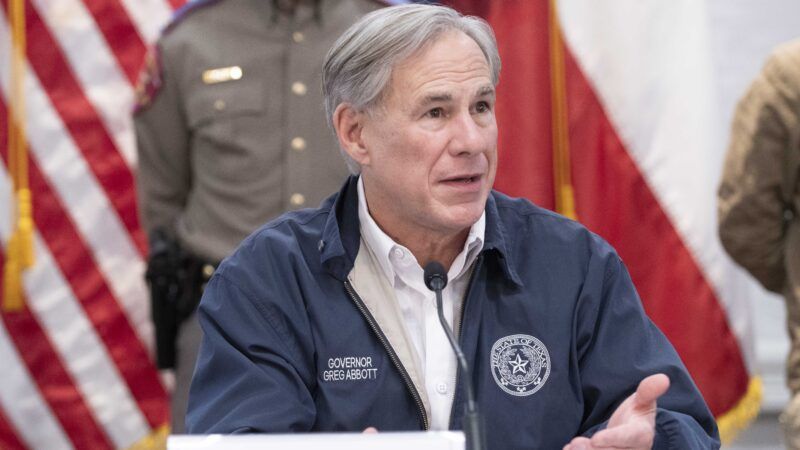Increases in Coronavirus Cases Are Happening Mainly in States With Stricter COVID-19 Rules
The Washington Post nevertheless blames "a broad loosening of public health measures."

When Texas Gov. Greg Abbott lifted most of his state's remaining COVID-19 restrictions at the beginning of March, critics warned that he was inviting a public health disaster. President Joe Biden said Abbott's changes, which among other things ended the state's face mask mandate and allowed businesses to serve customers at full capacity, reflected "Neanderthal thinking." Gilberto Hinojosa, chairman of the Texas Democratic Party, said the shift was "extraordinarily dangerous" and "will kill Texans."
A month after Abbott made those decisions, newly identified infections and daily deaths continue to decline in Texas. According to Worldometer's numbers, the seven-day average of daily new cases in Texas fell by 56 percent from March 1 to yesterday. Daily deaths fell by 64 percent during the same period.
New cases are on the rise in some states, prompting warnings that we are about to see a "fourth wave" as prematurely relaxed precautions allow the coronavirus to run wild in places where the population remains largely unvaccinated. Yet the states where cases are rising generally have stricter COVID-19 policies than Texas does.
"In the Midwest and Plains, Nebraska, Minnesota and Pennsylvania are among the states that have reported large increases," The Washington Post reports. "In the Northeast, states such as Delaware, Vermont and Maine have witnessed a similar incline."
The Post's inclusion of Nebraska, the one state with relatively loose policies, is rather puzzling, since cases there have been falling or essentially flat since early January. Yesterday the seven-day average of daily new cases in Nebraska, per Worldometer, was actually a bit lower than it was at the beginning of March.
Except for Nebraska, all of the states mentioned by the Post still legally require people to cover their faces in public. And except for Nebraska, all of these states continue to restrict indoor dining in restaurants. Minnesota allows restaurants to operate at 75 percent of their capacities. The same rule took effect yesterday in Pennsylvania, which previously had a 50 percent occupancy cap, a limit that still applies in Delaware, Maine, and Vermont.
The Post nevertheless says "experts…agree" that rising infection numbers are largely due to "a broad loosening of public health measures, such as mask mandates and limits on indoor dining," along with "increased spread of the more transmissible [virus] variants." The evidence so far does not seem to support that theory.
Mask mandates and stricter restaurant rules manifestly did not prevent daily cases from rising in five of the six states that the Post mentions. Other states that still require masks, including Connecticut, Maryland, Massachusetts, Michigan, New Jersey, New York, Oregon, and Washington, likewise have seen increases in new cases, some of them sizable, since March 1. In the 18 states that do not require face masks, cases are falling or flat everywhere except Florida, which has seen an uptick since mid-March.
None of this means that face masks are useless in reducing virus transmission. But it may mean that the difference between recommending face coverings (as Abbott, for example, continues to do) and legally requiring them is not as important as mask-mandate supporters tend to think—perhaps because most people are inclined to wear them anyway, perhaps because many businesses still require them after state mandates are lifted, or perhaps because of both. For what it's worth, the businesses I visit in Dallas still require face masks, and customers generally comply with that rule.
Likewise with restaurant restrictions. Perhaps there is a crucial public-health difference between banning and allowing indoor dining but not much of a difference between a 50 percent rule and a 75 percent rule, or between a 75 percent rule and no occupancy limit. Or perhaps restaurants are not a major source of virus transmission, as contact tracing data from New York and Minnesota suggest.
If you believe that government-imposed restrictions play a crucial role in reducing the spread of COVID-19, you will be inclined to blame relaxed restrictions for case increases, as the Post does. But when that assumption does not match what is happening, maybe it should be reconsidered.